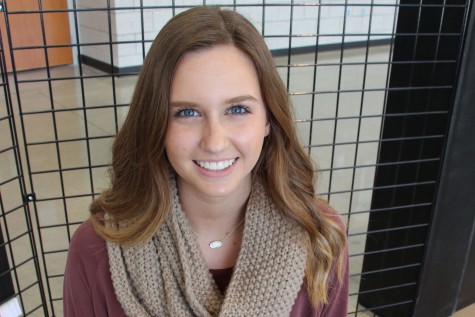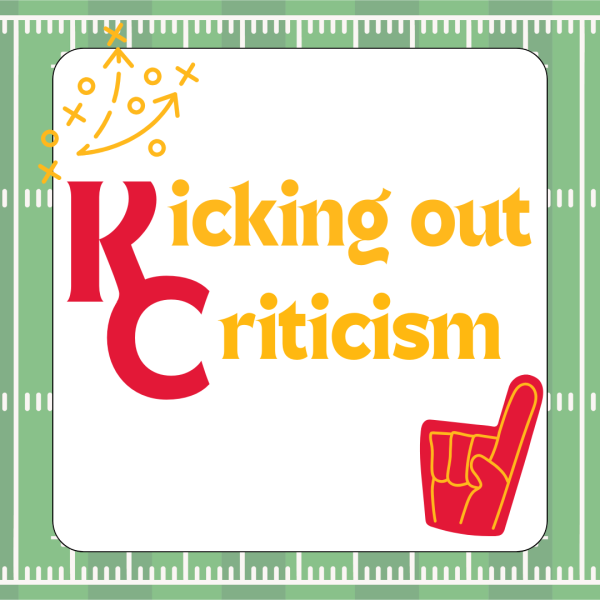Students Share Their Struggles with Mental Illnesses
Editors note: before writing It’s [not] Just the Anxiety, meetings with the school counselor, Kristi Dixon, as well as the principal, Scott Roberts took place for them to provide their advice and guidance to make sure this story was treated with the utmost respect. A very lengthy conversation with Adam Goldstein, a lawyer from the SPLC (Student Press Law Center) was held on the phone discussing the legal aspect; this story was cleared in all the ways mentioned. Forms by the parents of Brooke Hancock and John McKinsey were also signed to ensure they are aware that this story will be in print as well as online. This story’s purpose is not only to make readers aware that mental illness is an issue within the halls of Southwest, but also offer ways to seek help or cope with a diagnoses in an appropriate manner by using the stories of these two students as guidance.
Senior Brooke Hancock knows the misconceptions of mental illnesses all too well.
“You’re not depressed; you’re just sad. Snap out of it; be happy. It doesn’t work like that,” Hancock said. “Nobody understands how I feel. If you don’t have depression, you don’t know how it feels; you can’t understand it. It’s not something where you can just flip a switch and it’ll be better. It’s constant; it’s always nagging. I really have to fight it. This is waking up in the morning and not having the energy to get out of bed. This is you don’t want to go out and live your life because it’s too hard; it’s not just feeling down.
Seniors Brooke Hancock and John McKinsey are both fighting a battle with their mental illnesses. Hancock is diagnosed with severe forms of depression, anxiety and OCD. McKinsey is diagnosed with severe forms of depression, anxiety, OCD, night terrors and insomnia.
Some symptoms aren’t easy to detect. They commonly get mistaken for simply feeling ‘sad’ or being a ‘neat freak’ or being ‘anxious.’ However, going unnoticed, these symptoms can lead to more significant problems that can potentially stay with a person for the rest of his or her life. If left untreated without the right medications, the diagnosis could get more severe. The root of the mental illness can be attributed to both genetics and traumatic events in a person’s life.
“In retrospect I probably knew I had [my mental illnesses] before I got officially diagnosed, but it took it getting really bad to make it obvious to the people around me,” McKinsey said. “Since a young age, I’ve dealt with problems at home, and it’s gotten better. But when I was in elementary school, I was bullied a lot, and I got yelled at by my parents all the time. I’m sure that, along with the genetics, was initially the root to my disorders. Then, freshman year, I got sick and missed three weeks of school, so I’m sure that contributed to the anxiety aspect.”
Once a person is diagnosed with a mental illness, it’s important for him or her to cope to maintain a healthy life. Usually, therapy is a method that is recommended for people who have been diagnosed. There are many different types of therapists, but for some people, therapy doesn’t help. To Hancock, it seemed like a waste of time. Although therapy didn’t always work for McKinsey, he thought it was nice to talk to an adult rather than parents.
“I got my first diagnosis when I was about ten,” Hancock said. “I didn’t know what it was, but my parents suspected something wasn’t right. After being shoved into therapy, I put it together that things weren’t normal. When my mom was diagnosed with cancer, they threw me into therapy and said, ‘Here, sit and play with board games and talk about life,’ but then they were like, ‘This therapist wasn’t enough. You’re still weird; you have to go to another one,’ so then I’d go to the next one. Then, it would be that it wasn’t the right kind of therapy for me, so then I had to go to cognitive therapy. I’ve had around five therapists, and I don’t stay with them for very long because for me, it doesn’t do anything. They would talk to me, and I’d just sit and occasionally nod. They basically told me I have issues, and I’d leave feeling either worse than I did before, or content with the fact that I just threw up word vomit to make the session go faster.”
According to the Teen Treatment Center, as many as 30 percent of teenagers experiment with illicit drugs and alcohol, often as a way to cope with difficult situations. But this solution, while it may work temporarily, can eventually complicate the situation and in turn, cause more pain.
“Beginning of sophomore year I began using various substances to cope,” McKinsey said. “It was effective, but it got to an unhealthy level — to the point where I was smoking four times a day in my room, all by myself, because it felt wrong [not to]. I still smoke occasionally, because it doesn’t just go away. I also struggle[d] with self-harm, but now, instead of cutting, I use my rubber bands. Whenever I feel like I need to cut, I just snap my rubber bands. It’s temporary, but it works.”
There are support groups set up locally in Johnson County. According to Johnson County Gov, counseling, peer support and young adult/transition services are offered and can be beneficial to young people struggling with a mental illness.
“John and I have both struggled with self-harm in the past; we still do daily,” Hancock said. “It’s not an easy thing to pull yourself away from. But both of us have been to a place called Marillac where we both learned some skills by keeping your hands and your mind busy by keeping you secluded. Something as simple as taking a shower or going outside for a run. Anything to help you not hurt yourself.”
Because of genetics, people are also predisposed to addiction. If a person has a family member who has struggled with an addiction, he or she may have the same genetic marker. By knowing how vulnerable a person is, he or she can make different choices since they are more susceptible to addiction. When a person tries to treat one concern with another unhealthy coping strategy, things can start to pile up.
“Talking is a really helpful way to cope,” counselor Kristi Dixon said. “Having the courage to ask for help when you need it is huge. Most kids are trying to be independent and do their own thing — they think they can handle it. But, after a while, they run out. They say everything they know how to say. It’s important to understand that [given the situation] it’s completely realistic and normal to be sad. The way that we handle sadness is huge. If you’re a writer, you write. If you’re an artist, you paint. If you’re an athlete, maybe you might work out. Or, maybe you do community service because you want to focus on somebody else and get out of your head for a while. There’s all sorts of ways to express your sadness and work through it, but it helps if you do it with someone else.”
As a parent, having a child with a mental illness can be hard to accept. For both Hancock and McKinsey, they say their parents had a hard time understanding what they were going through.
“My parents at first were in denial, which is pretty common,” Hancock said. “It took them having to hospitalize me for them to realize that this is real; this is a big deal; she’s not okay. I’ll be feeling sick at school, and I’ll send my mom a text saying how I don’t feel well, and she’ll say, ‘Oh no, it’s probably just anxiety — you’re fine.’ [My parents] don’t understand that there are differences between my anxiety and me just being tired or not feeling good and wanting to go home to take a nap.”
According to Mental Health Works, for every one person self-medicating takes control of, there are eight or nine others behind the scenes — eight or nine people whose lives are thoroughly affected by living with another’s illness. The drugs, alcohol or self-inflicting weapon turns into something else, something much harder to recognize or accept.
“My parents still think that I used to cut for attention,” McKinsey said. “I’ve been hospitalized twice. They think that I can just cheer up. They think that I’m doing everything for attention, and that really puts a strain on my family. It does get me a lot of attention, but I hate it. I don’t want that kind of attention from my family — I want the good kind of attention. My struggles with mental illnesses take my parents’ focus away from my sisters because there’s so much negative energy spent on me, and that makes it really tough. My family has a history of mental illnesses and suicide. The second time I got hospitalized, which was when things got really bad, my dad didn’t talk for a week. He didn’t say a word because he was terrified because [this also happened to] his dad and his brother, and now me. That was the worst thing for me — terrifying my dad.”
Mental illness is a topic that is typically avoided, and as a reporter, making the decision to cover such a somber subject was a hard call to make. After hours upon hours of interviewing and researching, I still can not fathom what people dealing with mental illnesses go through daily. I can’t assimilate the daily struggle of not wanting to get up because of how intimidating the world seems, or having a mindset that is always in worse case scenario are situations they face first thing when they wake up; yet, they still manage to persevere through their day as if nothing is wrong. This is the kind of attitude that John and Brooke revealed to me and is what really motivated me to tell this story — to tell their story.
However, mental illness is not only common at Southwest, but throughout society as a whole. It’s important to recognize the drastic increase in teens being diagnosed with mental illnesses. According to Teen Mental Health, one in five young people suffer from a mental illness.
“When you have a mental illness, the little things are the big things and the big things are huge things,” Hancock said. “Everything is maximized. My mental illnesses shape who I am as a person. It also affects the way people look at me and the way people treat me. Mental illnesses deserve to be talked about way more than they are. It’s typically avoided because nobody wants to talk about it. To people with mental illnesses, that tells us that nobody cares about it. People who don’t have a mental illness don’t take it seriously because they don’t think it’s a real thing. It’s taking over a lot of lives. I see it in people I would never expect it in. That’s the thing — it can affect anyone.”







